 When God created the world he divided it into two teams," Kurt Vonnegut, Jr.
When God created the world he divided it into two teams," Kurt Vonnegut, Jr.The archetypes occur in places where no one is looking. It is again like the Yeats’ tale of the fairies playing in the bog – they disappear when the priest arrives. Same when the critics, fashion-makers, learned opinion-makes arrive. Invariably they create an orthodoxy and leave the living spirit a calsified statue.
In his most influential essay Heaven and Hell, published together with The Doors of Perception Aldous, Huxley talked of the influence of art which no art critic considered to be art. In the period when the institutional critics were agog over fur-lined coffee cups and chocolate machines which didn’t make chocolate, Huxley was discussing the folk art of the chalice used in the Catholic Sacrifice of the Mass, for example, considered irrelevant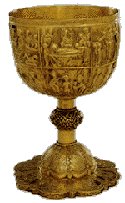 to the cultural priests and police of the day (and long since and before). The gods hide in low places. It is the way of all things. The face of God never reveals itself direct, always behind a screen, a curtain or a smoky mist. It can never be called by its name direct.
to the cultural priests and police of the day (and long since and before). The gods hide in low places. It is the way of all things. The face of God never reveals itself direct, always behind a screen, a curtain or a smoky mist. It can never be called by its name direct.
The Three Celestial Ones, as suggested, have dual faces, light and dark, as do the Three Sisters, and the totality form the full six female, then the six male – the 12 faces of the zodiac. Salvador Dali, who said, “I don’t know what my dreams mean but I think they mean something,” expressed it correctly – the artist, the folk-tale teller, the dreamer dreams in this language, not of precision, logic and language, but of association and intuition. The official artist or poet laureate may do so too perhaps, but not up in these mountains. They are as scripted as politicians and Pentagon officials. Invariably if the culture is going through an “idealist” phase, its priests which assign Noble Prize and Pushcart Awards to those which amend their package and will deny Tolstoy as being “too nihilist.” Seventy years later when the Priests are in a nihilisic phase, the idealist will be scorned. The artist sees from the center, the crtic from the edge. The successful critic is an extravert and amends the edge and consolidates opinion, forming groups. But bonding forms orthodoxy. A true artist or writer should have no colleagues. Not even any friends, as their expectations will always be either to the positive or the negative, wherever the culture is going, and the artist has to go alone. But that is not to be alienated, the neurasthenic and nihilistic outsider - the cliche of suburban culture, but the consumate insider who seeks and finds, the center.
 It is better usually to look to the artist no one listens to as a serious artist. Stan Lee or Fran Striker, who wrote the scripts for The Lone Ranger. The Lone Ranger starts with six coffins – spirits from the Land of the Dead, to send forth a champion on a new and idealistic journey. Dali’s vision here was formed in the Unconscious as a "partial Hallucination" and an "Apparition" of “six Lenins” – six skulls on a grand piano, again from the Land of the Dead – and Black Elk’s vision
It is better usually to look to the artist no one listens to as a serious artist. Stan Lee or Fran Striker, who wrote the scripts for The Lone Ranger. The Lone Ranger starts with six coffins – spirits from the Land of the Dead, to send forth a champion on a new and idealistic journey. Dali’s vision here was formed in the Unconscious as a "partial Hallucination" and an "Apparition" of “six Lenins” – six skulls on a grand piano, again from the Land of the Dead – and Black Elk’s vision was of the “six grandfathers” – spirits again; sacred spirits which pervaded the consciousness of the Earth at the beginning of a new age.
was of the “six grandfathers” – spirits again; sacred spirits which pervaded the consciousness of the Earth at the beginning of a new age.
The American condition as well came at its start essentially with six men who would fix its destiny for 400 years and until today and tomorrow. The Six are what made us organically a North/South country, filled with North/South contention and conflict.
Tensions today in the American political condition between the so-called Red states and Blue states are in a four-hundred year pattern. Perhaps this is an end game. In the next hundred years as economy and strength shifts to Asia, particularly
 Until now, however, there are six men who made our country what it is, three on each side (or team, as Vonnegut has it). They are
Until now, however, there are six men who made our country what it is, three on each side (or team, as Vonnegut has it). They are 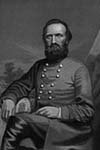 was John Adams and Alexander Hamilton.
was John Adams and Alexander Hamilton.
 This difference in outlook and these contentions can only be fully understood by understanding the chakras. Knowledge of the chakras will also explain why people act differently in different cultures and in the same culture. It is important to understand the chakras because they explain a lot that has been ongoing in the culture and a lot that is just beginning now. The low chakra of the gonads thereabouts brging in primal energy rich in sexuality and empowering emotions, like Elvis did, from which the world begins again.
This difference in outlook and these contentions can only be fully understood by understanding the chakras. Knowledge of the chakras will also explain why people act differently in different cultures and in the same culture. It is important to understand the chakras because they explain a lot that has been ongoing in the culture and a lot that is just beginning now. The low chakra of the gonads thereabouts brging in primal energy rich in sexuality and empowering emotions, like Elvis did, from which the world begins again.
Most of my antecedents have come from
 There is a picture of Jesus that is such a bad work of art that it has probably contributed to anti-Catholic sentiment over the ages, not because of content but because of kitsch. The picture is of Jesus holding his outer gown open around his chest and his heart is revealed beneath it. It is on fire and there is a crown of thorns circling it. Terrible though the art may be, it perfectly illustrates the heart chakra. (Magic: The Gathering cards have better pictures illustrating this, as Hinduism and Tibetan Buddhism do.)
There is a picture of Jesus that is such a bad work of art that it has probably contributed to anti-Catholic sentiment over the ages, not because of content but because of kitsch. The picture is of Jesus holding his outer gown open around his chest and his heart is revealed beneath it. It is on fire and there is a crown of thorns circling it. Terrible though the art may be, it perfectly illustrates the heart chakra. (Magic: The Gathering cards have better pictures illustrating this, as Hinduism and Tibetan Buddhism do.)
Zen Buddhism is very easy to understand by one who lives in the heart: it says the head is a trickster. It says the world of reason creates a material world, an artifact house, an illusion of language and logic. God is love and God lives in the heart. This is the center of the world.
it says the head is a trickster. It says the world of reason creates a material world, an artifact house, an illusion of language and logic. God is love and God lives in the heart. This is the center of the world.
Growing up in the fifties as Irish near Boston eventually brought a conflict between heart chakra – well reinforced by repeating until it was known “by heart” we used to say – of the Magnificat and the other prayers to the Blessed Virgin – and the practical secular world. The Magnificat, from Luke 1:46-55, is the Virgin’s joyous prayer in response to the Angel Gabriel’s annunciation to her that she will become the mother of the Son of God. We Catholics were technically at war with those who lived by the head, and their compulsive materialism was stressed throughout the whole program in the Catholic school. But their agents were not unfriendly and didn’t seem particularly hostile to us. If anything, they were indifferent.
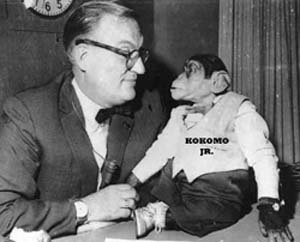 Dave Garoway and Garry Moore, these, the first pioneers of live, daytime television, I think were the first Protestants ever to enter our house. After TV they couldn’t be kept out of our living room and anyway they appeared quite harmless.
Dave Garoway and Garry Moore, these, the first pioneers of live, daytime television, I think were the first Protestants ever to enter our house. After TV they couldn’t be kept out of our living room and anyway they appeared quite harmless.
These were the agents who would bring you in. Bring in your parents, bring in the whole household and especially the kids. Eventually, the glow of the heart chakra when the Irish women would chant the rosary in a circle around a statue of the Blessed Mother would lose its serene luster compared to the entertaining prat falls and low theatre of Phineas T. Bluster and Princess Summer, Fall, Winter, Spring. And as we got older, it became increasingly clear to us boys that these outsiders, the People of the Head, were a lot better at doing things and making things and figuring things out than we Irish of the Rosary.
theatre of Phineas T. Bluster and Princess Summer, Fall, Winter, Spring. And as we got older, it became increasingly clear to us boys that these outsiders, the People of the Head, were a lot better at doing things and making things and figuring things out than we Irish of the Rosary.
In the North, I was among the last to leave the heart chakra because of the recent arrival of my grand parents from
In the South, people both black and white, still live in the heart. That is changing now because people are heading South now from the North.
There is something in nature that drives the head away from the heart and destines them to despise one another. In his perceptive book, Southerners and Other Americans, Forrest McDonald tries to account for the differences between Northerner and Southerner, but he feels he failed in that quest.
Sociologist John Shelton Reed may be leading the way in this, as he points out that the North is different from the South just because we are herre and they are there. Reed, a professor at
Grady McWhiney’s Cracker Culture: Celtic Ways in the Old South, finds many opposites between Northern and Southern parts. These are estrangements between the heart and the head. Forest McDonald writes in the preface to McWhiney’s book that fundamental and lasting divisions between Southerners and Northerners, “began in colonial
between Southerners and Northerners, “began in colonial
By contrast, Massachusetts and Boston were settled by urban English, Calvinists and Protestants who brought with their entourage a lasting Calvinist ethic, from which would evolve the Yankee work ethic. In a word, New England was an extension of the cultural transformation England and northern Europe was going through, while the South’s culture was ultimately formed not so much by British planter society, but by ordinary folks, described by Frank L. Owsley in Plain Folks of the South. Real plain folk – chiefly farmers and herders – shaped the Old South. Like Yeats’ peasants, communicating with the spirits in the bog, these folks had little involvement with the Enlightenment and the Age of Reason. They still lived in the heart and off the earth.
From here, the North, particularly
Divisions of head and heart are differences between a left-brained techno-matrix orientation in the world (yang) and an empathetic (yin) orientation in the world. In the Southern manifesto by the “reconstructed but unregenerate” literary renegades of Vanderbilt University known as the Fugitives, this was summed up as a distinction in the phrase, “Agrarian versus Industrial.” Furthermore, W. J. Cash, in his landmark study would write that it t’was ever thus, and the Southern fight against the Yankee in the Civil War was simply an outbreak of an inner conflict that continued into the next century by other means.
The Southern mind, wrote Cash in The Mind of the South in 1941, was a defense against, “The Yankee Mind, the Modern Mind and the Negro Mind.” He might better have called it the Southern heart.
 C.G. Jung wrote in 1927 after a visit to the American South that virtually all American music and religion in the South found its chief inspiration in African-American influence. He also compared the participation mystique of
C.G. Jung wrote in 1927 after a visit to the American South that virtually all American music and religion in the South found its chief inspiration in African-American influence. He also compared the participation mystique of
And still it continues. Historian Dan Carter writes in his book, The Politics of Rage, a biography of George Wallace, that the entire Wallace rise and fall was a reaction to the new initiatives of the culture of the 1960s, of the Freedom Riders in the South, the integration decision of Brown vs. the Board of Education, the hippies and so on. “. . . as the civil rights movement expanded in the 1960s to inspire the women’s rights movement, the antiwar movement, and the politics of sexual liberation, George Wallace adroitly broadened his message,” writes Carter. “Journalists might greet this growing counterculture with curiosity, even approval. But Wallace knew – instinctively, intuitively – that tens of millions Americans despised the civil rights agitators, the antiwar demonstrators, the sexual exhibitionists as symbols of a fundamental decline in the traditional cultural compass of God, family, and country.”
Wallace invoked images of a nation in crisis, writes Carter, a country in which thugs roamed the streets with impunity, antiwar demonstrators embraced the hated Communist Vietcong, and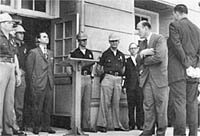 brazen youth flaunted their taste for “dirty” books and movies. “And while
brazen youth flaunted their taste for “dirty” books and movies. “And while
And furthermore, in the summer of 1974, after Wallace made a much-heralded visit to the
From first days to the present, there it is: Pat Robertson, the NRA, the “culture wars,” the teaching of Creationism, the whole nine yards – it’s all about the Beatles and the hippies. But even the new influence find their way to the South when they were heart-based. I once spoke to a Southern anthropologist who was hired to teach the FBI "non-confrontational" strategies of disarming radical confrontations, like those which occurred at Waco and Ruby Ridge. These strategies were bsaed on Eastern thinking, but he said it was quite easy from Southern police and military to understand them strategically as they come from the same heart-based orientation as the Hindu. In fact, the three major Hindu influences of the Sixties despised by Robertson and Falwell all found their homes in the South. The Khrishna's, the Maharishi  Mahesh Yogi and Woodstock guru Swami Satchidanda all establishing teaching and retreat centers in the mountains of West Virginia, North Carolina and Virginia. Satchidanda was given land for a retreat in Connecticut and he sold it and moved his retreat to Virginia However, the more cerebral Buddhist influences in the seme period established permanent bases in Woodstock, Vermont and Barnet, Vermont and in Woodstock, New York.
Mahesh Yogi and Woodstock guru Swami Satchidanda all establishing teaching and retreat centers in the mountains of West Virginia, North Carolina and Virginia. Satchidanda was given land for a retreat in Connecticut and he sold it and moved his retreat to Virginia However, the more cerebral Buddhist influences in the seme period established permanent bases in Woodstock, Vermont and Barnet, Vermont and in Woodstock, New York.
David McCullough’s recent biography of John Adams nicely brings American and French revolutionary history down to two phrases: Thomas Jefferson’s expression selected for the Constitution, “ . . . born free and equal,” – a view from the heart - in opposition to that which John Adams preferred, “ . . . born equally free and independent,” – clear, objective and legalistic; the judgment of the head. Here at the very birth of federalism a life-long alienation arises between the “binary” founding fathers Adams and Jefferson, Northerner and Southerner (who died within hours of each other on the Fourth of July, 50 years after the signing of the Constitution). Both strong idealists, but idealists of the head and of the heart. The first major threat of secession came during the Adams Presidency and the Alien and Sedition Acts. Jeffferson considered these repressive laws to be in opposition to the spirit of the
The North/South contention in American life has been organically oppositional from the beginning in 1607, but the key moment of change came only when George Washington firmed his alliance with Northerners Hamilton and Adams who favored Jay’s Treaty, which firmed a new alliance with England only 18 years after the Revolution. The Virginians, Jefferson, Madison and Monroe were shocked, and preferred the Revolutionary alliance with 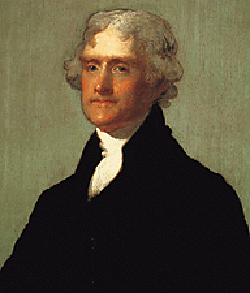 Jefferson, Madison and Monroe began to consolidate the South’s position in opposition to them. Jefferson expected invasion by the Northern states as early as 1897. Perhaps it was only the great national status of the Founders, respect for Jefferson in particular, which prevented it. It was not until they were all dead, by which time the North had built into an enormous economic and world power and was experiencing great growth in manpower from Ireland and Europe to work in factories, that they began to take action. It was not until William Lloyd Garrison, of Boston Clipper Ship class and his father a sailing master, published Liberator, in 1831, that the simmering conflict opened to overt and hostile relationships, which backed by the industrial class of the North, would inevitably be decided in favor of the North. Jefferson had died only five years before, in 1826.
Jefferson, Madison and Monroe began to consolidate the South’s position in opposition to them. Jefferson expected invasion by the Northern states as early as 1897. Perhaps it was only the great national status of the Founders, respect for Jefferson in particular, which prevented it. It was not until they were all dead, by which time the North had built into an enormous economic and world power and was experiencing great growth in manpower from Ireland and Europe to work in factories, that they began to take action. It was not until William Lloyd Garrison, of Boston Clipper Ship class and his father a sailing master, published Liberator, in 1831, that the simmering conflict opened to overt and hostile relationships, which backed by the industrial class of the North, would inevitably be decided in favor of the North. Jefferson had died only five years before, in 1826.
In his 1930’s essay, The Irrepressible Conflict, Frank Lawrence Owsley has the regional conflict evolving between New Yorker Alexander Hamilton’s vision and the Southern pastoralist Jefferson’s: “Their social systems were hostile; their political philosophies growing out of their economic and social systems were as impossible to reconcile as it is to cause two particles of matter to occupy the same space at the same time; and their philosophies of life, growing out of the whole situation in each section, were as two elements in deadly combat. What was food for the one was poison for the other.”
 In the beginning, wrote Owsley, two men defined fundamental principles of the political philosophy of the two societies, Alexander Hamilton for the North and Jefferson for the South. "The one was extreme centralization, the other was extreme decentralization; the one was nationalistic and the other provincial; the first was called Federalism, the other State Rights."
In the beginning, wrote Owsley, two men defined fundamental principles of the political philosophy of the two societies, Alexander Hamilton for the North and Jefferson for the South. "The one was extreme centralization, the other was extreme decentralization; the one was nationalistic and the other provincial; the first was called Federalism, the other State Rights."
This is the vision of Lord Krishna holding two eggs. It is represented in the Upanishads as a story of two birds perched on the branch of a pippala tree. It is the Dance of All Creation.
No comments:
Post a Comment